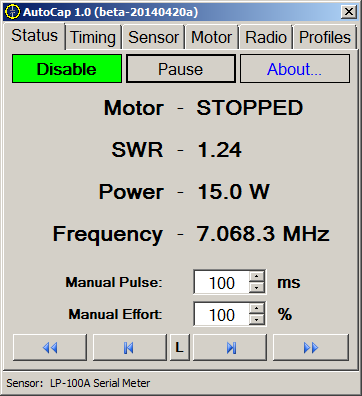Step 1 — Just the Essentials — Proving the theory to myself with a no-frills loop experiment
Step 2 — Vacuum-Variable Capacitor — Adding a high-quality capacitor to allow precise tuning
Step 3 — Motor Driven Capacitor — Tuning the loop remotely with a small DC motor
More Loops — Construction of additional loops of varying sizes and materials:
A 20m loop — trying to squeeze every last drop of efficiency out of a loop on 20m
A 6m loop — because, well, why not?
A 40m loop — a truly small loop with capacitor selection cost-optimized for 40m
A 10m loop — optimized for 10m, but also extendable down to 20m
An 80m loop — that turned out to work really well on 40m, too
The Mark-7 — an optimized 20m loop, with some alternative construction techniques; later extended to cover 20m through 80m
The Zebra — another 80m antenna using a thin helix of copper foil
Multiband Operation — How I match my loops for use on more than one band
Next Steps — Some wish-list items for more research and permanent installations
Conclusions — What I would do if I were to do it all over again
Closing Thoughts — A discussion on why loop antennas aren't as simple as a few formulas





















